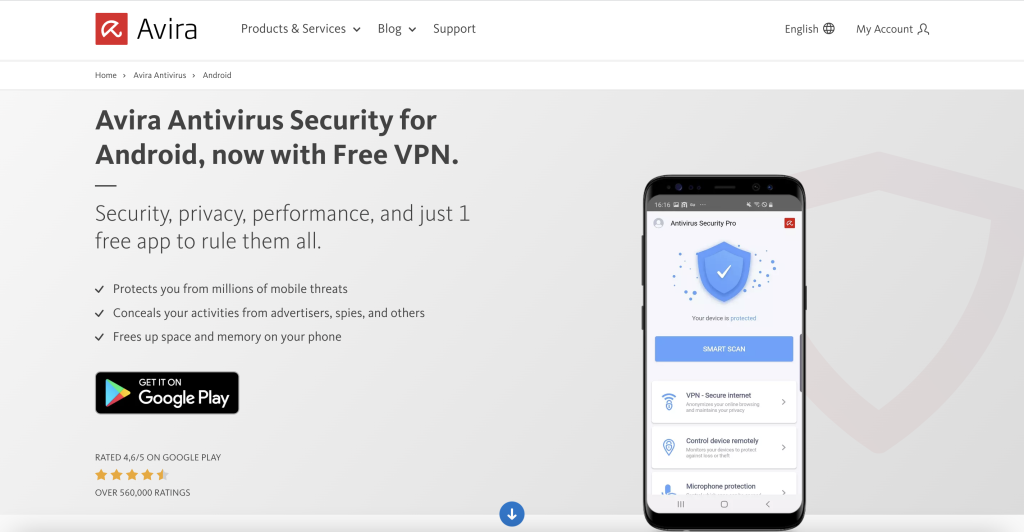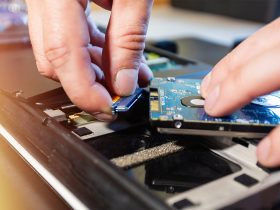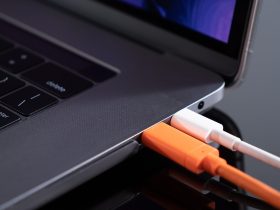Is it dangerous if your smartphone gets hot? You’ve probably asked yourself that at some point, recalling media reports of exploding mobile phones.
Smartphones don’t usually explode. The Samsung phones that exploded around 2016 were due to a production error (the batteries were too big for the casing), causing major harm to the company’s reputation and prompting manufacturers to be more careful.
Nevertheless, overheating can certainly occur, which can affect your device’s performance and cause greater damage. There are a variety of reasons for this.
Read on to learn what could be causing it and what tips and tricks you can use to solve the issue or prevent it from happening in the first place.
What does it mean if your smartphone is overheating?
For many of us, the smartphone has become a daily and indispensable companion that we usually leave on permanently and use without a second thought no matter the weather at home, on the road, or at work.
The asphalt used to surface roads can crack in extremely warm temperatures — and your phone can also be seriously damaged if it overheats. So it’s good if you know the causes and effects of your smartphone overheating and how you can avoid smartphone heat stroke.
Causes of smartphones overheating
There are various reasons why your smartphone can get too hot — and in the worst case, it can lead to overheating, which can have a major impact on the device’s performance.
Prolonged and direct exposure to the sun
Especially in summer, you might accidentally leave your mobile phone in the sun for too long, causing it to heat up so much that you can barely touch it.
Device manufacturers advise that it’s best to use your smartphone within its operating temperature of between 0° and 35° C (32° to 95° F). Because summer temperatures often exceed of 35° C (95° F), your mobile phone can quickly overheat — especially if you’re always on it in a very warm environment.
Demanding apps
Do you like gaming apps and use them for hour on end? Then you probably know that your phone sometimes gets very hot the longer you play. Gaming apps can sometimes require a lot of processor power and eat up memory, leading to overheating during long periods of heavy gaming.
But apps that are always open also require processor power and memory to run background services, causing your phone to overheat.
Fast charging
The back of smartphones often gets warmer when you charge them — especially if they have a Quick Charge function. However, if the back is quite hot during charging, this could be a sign that your phone has overheated.
A very tight-fitting smartphone case
If you often use memory-hungry apps, charge your phone at the same time, and use a very tight-fitting smartphone case to protect your device, this can lead to your phone overheating — especially in hot summer temperatures above 35° C (95° F).
Symptoms and impacts of an overheated phone
Older smartphones in particular sometimes don’t have particularly sophisticated protection mechanisms that switch off your device automatically if it overheats. This makes it all the more important that you know the symptoms and impacts.
Decrease in battery capacity
If your smartphone’s battery temperature increases by around 10° C/50° F, this causes electrochemical processes to run twice as fast. The gases that are produced as a result then escape through a pressure relief valve. This spells bad news for the battery, as it ages faster than usual.
Processor damage
Your phone’s processor can also overheat and get damaged. If it does, hopefully the processor will switch itself (and the smartphone) off before it’s too late.
Discolored display
As mentioned, It’s bound to happen at some time or another, where you end up leaving your smartphone lying in the direct sun for a while. The impact can be disastrous, causing the display to fade or discolor.
The initial sign that overheating has damaged your smartphone’s display is the appearance of dark spots on the touchscreen — which, in the worst case, don’t go away even after your phone has cooled down.
The display gets damaged because the liquid crystals in the display react to direct sunlight and intense heat, causing them to practically dissolve. In addition to dark areas on the display, you may experience display errors (like flickering) and the touchscreen may stop functioning correctly.
Tips and tricks to prevent your phone overheating
Luckily, there are a number of things you can do to keep your smartphone from overheating.
For a long time, experts have been advising that it’s a good idea to regularly restart your smartphone. That’s because when you power it down, background processes which negatively impact device performance are ended automatically.
In certain cases, a security solution can indirectly improve protection against your smartphone overheating
It’s no secret: A proven security solution for Android or security solution for iOS is an absolute must-have on any smartphone or tablet you use to surf the internet. That’s because it allows you to better monitor malware security, your online privacy, and device performance.
Among other benefits, if you use Avira’s security solution, the integrated optimizer can tune up your device’s memory and storage if you’re using very demanding apps on it. You probably also know that malware can also cause your device to overheat — but with regular scans, you can check whether malware may be lurking on your device.

Smartphones like shade and mild temperatures
Especially in summer, you shouldn’t leave your mobile phone in the blazing sun — and a parked car isn’t a good place either, since heat can build up within a vehicle, causing the temperature inside to be many times higher than the actual outside temperature.
And, as mentioned, manufacturers recommend that you should only use your smartphone at temperatures between 0° and 35° C (32° to 95° F).
Various apps are available for Android models, like CPU Monitor, which are designed to help you keep an eye on your smartphone’s temperature — but you’ll also come across a number of similar apps in the app stores that will sap your battery life and do the exact opposite of what you want them to do. Incidentally, newer iPhones automatically show you when they’re getting too hot.
Close apps you no longer need to avoid damage caused by overheating
Many of us tend not to completely close the apps we use once we’re done using them, instead turning off our phones and putting them in standby mode. It’s not a very good idea, because apps that are left running still use a lot of battery power and put a strain on your phone’s processor. Gaming and social network apps in particular are just some of the many apps that can have a huge impact on device performance due to their background activity.
Speaking of apps you no longer need: You’ve probably found yourself downloading apps only to realize after a while that you’ve actually never used them since. Deleting apps you no longer need can also help improve your smartphone’s performance.
OS and app updates can help protect against overheating
Updating the Android or iOS operating system and the apps you use helps to plug security holes that have emerged. This makes it difficult for cybercriminals to inject malware into your device, which could cause your phone to overheat in the background.
Avoid completely discharging your smartphone
You should avoid draining your smartphone’s battery to zero percent because it’ll cause it a great deal of damage in the long run. Ideally, you should always keep the battery charge level between 15 and 95%.
Turn off Wi-Fi and GPS
If you’re on the go and don’t need Wi-Fi, turn it off. Doing so means you’re helping a bit to prevent your phone from overheating. Wherever you are, your phone is always searching for a nearby Wi-Fi connection, which affects processor performance. The same applies to the GPS data that your phone continuously collects.
Top tip: Don’t turn off the GPS feature on your child’s smartphone, because it can be very handy when it comes to your child’s safety. Many parental control apps can send you your child’s location on demand, but this only works if the GPS feature is on. Check out our blog too for an article on the subject of child protection apps.
How do you cool down an overheated phone?
First things first: If your smartphone has gotten too hot, the refrigerator is definitely not the right place to cool it down. That’s because you’d be taking your smartphone from one extreme to the other and the resulting condensation could also lead to moisture building up in your phone, causing corrosion.
So, the first thing you should do is move your phone to somewhere cooler, turn it off, and let it cool down before restarting it.
A top tip: You should also never charge your smartphone at temperatures below 0° C (32° F), because the integrated lithium-ion batteries react to cold with an immediate loss of capacity, become unstable, and will then need to be replaced fairly soon.
If your phone overheats, when should you seek professional help?
If your phone’s display shows the symptoms described, i.e. flickers, you can see black dots, or it’s unresponsive when you try tapping app icons, you’ve definitely reached the point when you should call for professional help from the manufacturer themselves or from a service provider. That’s because your only option is to replace the display, which is ultimately expensive, but still cheaper than a new phone.
If it seems like you’re constantly having to hook up your mobile phone to a charger, overheating has probably caused battery issues. It too can be replaced quite easily — but be sure to only use original replacement batteries.
You can also get your phone inspected if you suspect it’s overheating.














